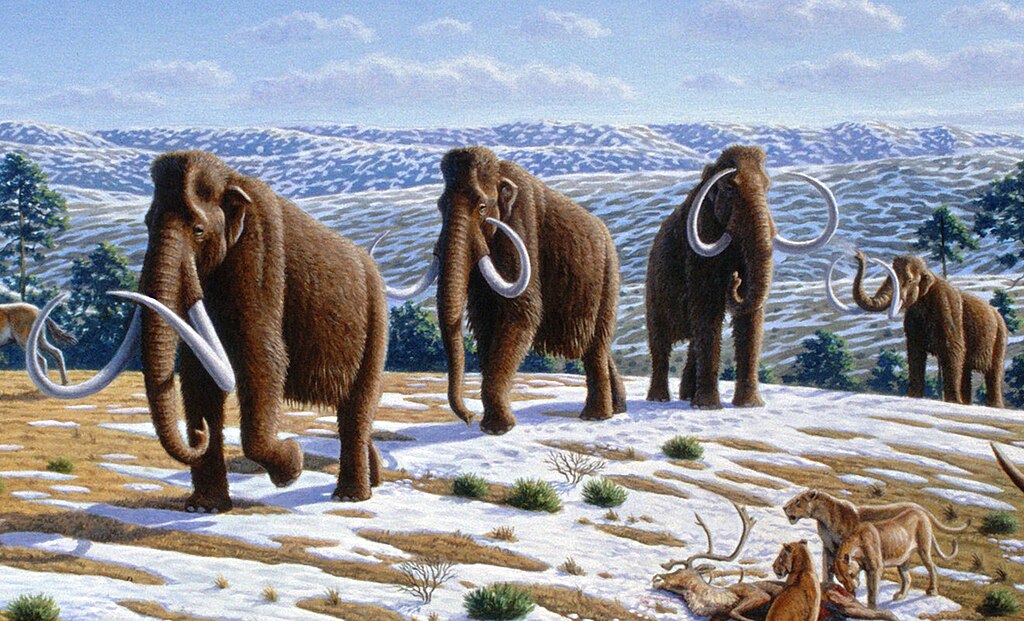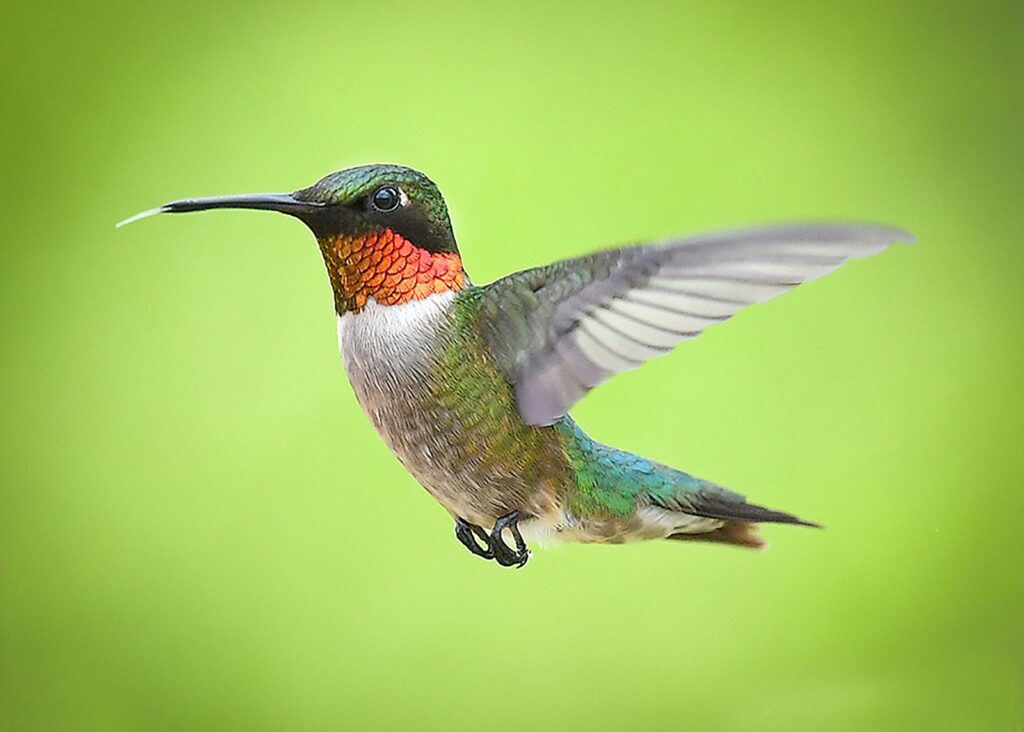The notion of resurrecting long-extinct dinosaurs from genetic material has captivated the public imagination since Michael Crichton’s “Jurassic Park” brought the concept into mainstream consciousness. While the fictional scientists in the novel extracted dinosaur DNA from mosquitoes preserved in amber, real-world paleogeneticists are exploring a different avenue: the genetic legacy of dinosaurs that persists in their living descendants—birds. Recent advances in genomic technologies and our understanding of evolutionary biology have sparked renewed scientific interest in whether avian genomes might contain ancestral DNA segments that could theoretically contribute to de-extinction efforts. This article explores the scientific reality behind this fascinating possibility, examining both the remarkable connection between birds and dinosaurs and the technological hurdles that would need to be overcome to make dinosaur de-extinction more than just science fiction.
The Evolutionary Connection Between Birds and Dinosaurs

Modern birds are the direct descendants of theropod dinosaurs, a relationship that has been firmly established through decades of fossil evidence and comparative anatomy. This evolutionary link was first proposed by Thomas Henry Huxley in the 19th century after observing similarities between Archaeopteryx fossils and small carnivorous dinosaurs. Today, the evidence is overwhelming—from skeletal structures to the presence of feathers in many non-avian dinosaurs. The theropod lineage that led to birds underwent a series of adaptations over millions of years, gradually developing features we associate with modern birds while retaining their fundamental dinosaurian nature. This direct evolutionary relationship means that birds don’t just resemble dinosaurs—they are living dinosaurs, specifically members of Maniraptora, a group of theropods that includes Velociraptor and other dromaeosaurids. This relationship forms the scientific basis for the hypothesis that modern bird genomes might retain elements of their dinosaur ancestry.
What Happens to DNA Over Millions of Years

The primary challenge in accessing dinosaur DNA directly stems from its fragility over geological time. DNA naturally degrades after death, with the double helix breaking down into smaller fragments as chemical bonds rupture. Environmental factors like temperature, humidity, and microbial activity accelerate this degradation. Scientific studies suggest that DNA has a half-life of approximately 521 years under ideal preservation conditions, meaning that after about 6.8 million years, no readable DNA should remain in a fossil. Given that non-avian dinosaurs went extinct approximately 66 million years ago, the prospect of finding intact dinosaur DNA in fossils is exceedingly remote. Each strand would have broken down into fragments so small that they would be indistinguishable from environmental contamination. This fundamental constraint of molecular preservation explains why scientists interested in dinosaur genetics must turn to indirect approaches rather than hoping to extract DNA directly from fossils, no matter how well-preserved they appear to be.
Birds as Living Dinosaur Archives

Birds represent living repositories of dinosaurian genetic heritage, having inherited their genome from their theropod ancestors. While 66 million years of evolution have substantially altered their genetic makeup, birds retain numerous genetic elements that were present in their dinosaur ancestors. These include genes responsible for scale development, egg formation, and various metabolic functions. Some researchers suggest that certain dormant genetic pathways in birds might even retain the capacity to express more dinosaurian characteristics under specific conditions. This concept was dramatically illustrated when developmental biologist Hans Thewissen manipulated chicken embryos to express more dinosaur-like traits, including a snout instead of a beak. Such experiments reveal that modern bird genomes contain suppressed genetic information that dates back to their dinosaur ancestry. By studying these “atavistic” traits and the genetic switches that control them, scientists gain indirect access to aspects of dinosaur biology that would otherwise be lost to time.
Atavistic Features and Reverse Engineering

The field of evolutionary developmental biology has revealed that modern birds possess latent genetic programs capable of producing ancestral dinosaurian features. These atavistic traits occasionally manifest through developmental manipulations or rare mutations. For example, scientists have successfully induced the growth of teeth-like structures in chicken embryos by activating dormant genetic pathways. Similarly, the famous “chickenosaurus” experiments led by paleontologist Jack Horner aimed to reverse-engineer dinosaur-like traits in chickens through selective breeding and genetic modifications. In another remarkable discovery, researchers found that suppressing certain proteins in chicken embryos resulted in the development of dinosaur-like fibulas and wrist bones reminiscent of their theropod ancestors. These experiments suggest that birds possess a genetic “memory” of their dinosaurian past encoded within their DNA, with many ancestral features simply deactivated rather than deleted from the genome. This realization offers a potential pathway for scientists interested in understanding dinosaur genetics without needing perfectly preserved ancient DNA.
The Role of Comparative Genomics

Comparative genomics has emerged as a powerful tool for exploring the dinosaurian elements within bird genomes. By analyzing genetic sequences across multiple bird species and comparing them with other reptiles and mammals, scientists can identify conserved regions that likely existed in their common dinosaurian ancestors. This approach relies on the principle that genes essential for survival tend to change very slowly over evolutionary time. When researchers find genetic elements shared among all birds but absent in other vertebrates, these may represent dinosaur innovations that benefited bird ancestors. Similarly, by comparing the genomes of birds with varying degrees of ancestral features, such as ostriches (which retain more primitive characteristics) versus highly derived songbirds, s—researchers can better understand genetic changes that occurred during avian evolution from their dinosaur forebears. Modern computational techniques allow scientists to reconstruct ancestral gene sequences with increasing accuracy, providing insights into the genetic makeup of extinct dinosaurian lineages without direct DNA recovery.
Technological Challenges of De-Extinction

Even if scientists could access or reconstruct dinosaur genetic information through bird genomes, numerous technical obstacles would remain before de-extinction could become feasible. Chief among these is the challenge of assembling a complete functional genome. While birds may retain some dinosaur genes, they represent only a fraction of the original dinosaur genome, with many sequences lost or significantly modified over 66 million years of evolution. Additionally, creating a viable embryo would require an appropriate egg cell and surrogate parent, raising questions about developmental compatibility between modern birds and their distant ancestors. The epigenetic programming—essential instructions for gene expression that exist beyond the DNA sequence itself—would also need to be recreated, something beyond current technological capabilities. Furthermore, the complex interplay between genes and the nd environment that shapes an organism during development presents additional complications. These technological hurdles collectively suggest that while birds offer valuable insights into dinosaur biology, complete dinosaur resurrection through avian genetics faces formidable scientific challenges that may prove insurmountable with current or foreseeable technologies.
Successful Examples of Genetic Resurrection

While full dinosaur de-extinction remains speculative, scientists have achieved limited success in resurrecting genetic elements from more recently extinct species. The most notable example is the partial resurrection of the woolly mammoth genome through CRISPR technology applied to elephant cells. By identifying genetic differences between mammoths and their closest living relatives (elephants) and editing elephant DNA accordingly, researchers have created cells with mammoth-like characteristics. Another promising case is the gastric-brooding frog, extinct since the 1980s, where scientists used preserved tissues to recover cell nuclei and implant them into egg cells of related frog species, temporarily reviving the extinct frog’s genome before development ceased. The passenger pigeon de-extinction project represents another ongoing effort, with researchers working to edit the genome of band-tailed pigeons to express passenger pigeon traits. These examples, while limited in scope compared to dinosaur resurrection, demonstrate that genetic recovery becomes increasingly feasible as we move closer in time to the present and when closely related species still exist—conditions that unfortunately don’t apply to non-avian dinosaurs.
Paleogenomics and Ancient DNA Research

The field of paleogenomics—the study of ancient genetic material—has made remarkable advances in recent decades, though these successes highlight the temporal limitations of DNA preservation. Scientists have successfully sequenced near-complete genomes from specimens tens of thousands of years old, including Neanderthals, Denisovans, and various Pleistocene mammals like mammoths and cave bears. The oldest verified DNA sequences come from a 700,000-year-old horse specimen preserved in permafrost conditions. These accomplishments, while impressive, underscore the vast temporal gap between the most ancient recoverable DNA and the age of dinosaur fossils, which are at minimum 66 million years old. The theoretical and empirical limits of DNA preservation suggest that direct recovery of dinosaur DNA is virtually impossible. However, paleogenomic techniques continue to advance, particularly in reconstructing degraded genetic information from increasingly older specimens. These methodological improvements, while unlikely to bridge the dinosaur DNA gap directly, strengthen our ability to study evolutionary trajectories and potentially reconstruct ancestral genetic states through comparative analysis with living descendants.
CRISPR and Genetic Engineering Applications

CRISPR-Cas9 and related gene-editing technologies represent revolutionary tools that could theoretically contribute to dinosaur de-extinction efforts. These molecular systems allow scientists to precisely modify genetic sequences, potentially activating dormant dinosaurian traits in bird genomes or inserting reconstructed dinosaur genes into avian embryos. George Church’s Woolly Mammoth Revival project demonstrates how CRISPR can be used to edit elephant cells to express mammoth-specific cold-adaptation genes, providing a conceptual model for dinosaur work. However, applying such techniques to dinosaur resurrection involves considerably greater challenges. While CRISPR excels at making discrete changes to existing genomes, the genetic distance between modern birds and their non-avian dinosaur ancestors would require thousands of precise edits affecting multiple interconnected systems. Additionally, many dinosaur genes may have been lost entirely rather than merely deactivated, making them impossible to resurrect through editing alone. Despite these limitations, CRISPR technology continues to advance rapidly, potentially offering new approaches to exploring dinosaurian genetics through careful manipulation of bird genomes to express ancestral traits in limited, controlled ways.
Ethical Considerations and Ecological Implications

The prospect of dinosaur de-extinction raises profound ethical questions that extend beyond technical feasibility. Critics argue that such efforts could divert resources from conserving endangered contemporary species, essentially prioritizing scientific curiosity over pressing conservation needs. Animal welfare concerns also figure prominently in these discussions—any successfully created dinosaur-like organisms would exist without their natural social structures, habitats, or ecological contexts, potentially causing significant suffering. The ecological implications of introducing species that have been absent from Earth for 66 million years present additional complexities. Modern ecosystems have evolved without these organisms, raising questions about how they might impact existing species dynamics, potentially becoming invasive or disrupting established ecological relationships. Furthermore, there are philosophical questions about the authenticity of recreated dinosaurs—would genetically engineered organisms based on bird genomes truly be “dinosaurs” in any meaningful sense, or merely novel chimeric creatures shaped by human technological intervention? These ethical dimensions suggest that dinosaur de-extinction requires careful consideration beyond mere technical capability.
Alternative Approaches to Understanding Dinosaur Biology

While direct genetic resurrection of dinosaurs faces substantial obstacles, scientists have developed numerous alternative approaches to understanding dinosaur biology. Soft tissue studies have revealed preserved blood vessels, cells, and protein fragments in exceptionally preserved fossils, offering molecular insights without requiring intact DNA. Chemical analysis of fossil pigments has allowed researchers to determine the colors of some feathered dinosaurs, providing visual reconstructions based on physical evidence rather than speculation. Biomechanical modeling has advanced significantly, using computer simulations based on skeletal structure to understand how dinosaurs moved, interacted with their environments, and even how certain species might have sounded. Additionally, studies of extant phylogenetic brackets—examining both birds and crocodilians, the closest living relatives of dinosaurs—provide insights into dinosaur physiology, reproduction, and behavior through comparative analysis. These multidisciplinary approaches collectively offer a rich understanding of dinosaur biology without requiring genetic resurrection, demonstrating that valuable paleontological insights can be gained through methods that complement or circumvent the limitations of ancient DNA research.
The Future of Dinosaur Genomics Research

The trajectory of dinosaur genomics research points toward increasingly sophisticated integration of paleontological data with avian genomics and developmental biology. Future advances may focus on creating more accurate computational models of ancestral dinosaur genomes by analyzing evolutionary patterns across diverse bird species and other reptiles. Artificial intelligence and machine learning approaches show particular promise for identifying subtle genetic signatures of dinosaurian ancestry within modern bird genomes that human researchers might overlook. Developmental studies will likely continue exploring how manipulation of regulatory genes in birds can reveal ancestral traits, potentially creating increasingly dinosaur-like characteristics in controlled laboratory settings. While complete dinosaur resurrection remains unlikely, the field may progress toward creating organisms with limited but significant dinosaurian traits—what some researchers term “analogues” rather than true recreations. These partial approaches may ultimately prove more scientifically valuable than attempts at complete resurrection, offering targeted insights into specific aspects of dinosaur biology while acknowledging the practical and ethical limitations of de-extinction. As genomic technologies continue advancing, our understanding of the dinosaurian aspects of bird genomes will undoubtedly deepen, even if it doesn’t lead to the dramatic scenario envisioned in “Jurassic Park.”
Conclusion: Balancing Scientific Possibility with Practical Realities

The question of whether dinosaur DNA hidden in birds could unlock de-extinction technologies remains tantalizingly complex. While birds indeed carry the genetic legacy of their dinosaur ancestors, the 66-million-year evolutionary gap presents formidable challenges that current technology cannot fully overcome. The most realistic scientific approach lies not in attempting complete dinosaur resurrection but in strategically studying the dinosaurian elements preserved within bird genomes to better understand these magnificent extinct creatures. This research path offers valuable insights into evolutionary biology without requiring the problematic leap to actual de-extinction. As technology advances, our ability to interpret the dinosaurian aspects of bird genetics will undoubtedly improve, potentially allowing for limited expression of ancestral traits in laboratory settings. However, the complete recreation of extinct dinosaur species remains firmly in the realm of science fiction for the foreseeable future. The true scientific value lies in the journey of discovery—using bird genomes as windows into evolutionary history rather than as templates for resurrection, thereby enriching our understanding of life’s remarkable evolutionary trajectory without attempting to reverse it.




